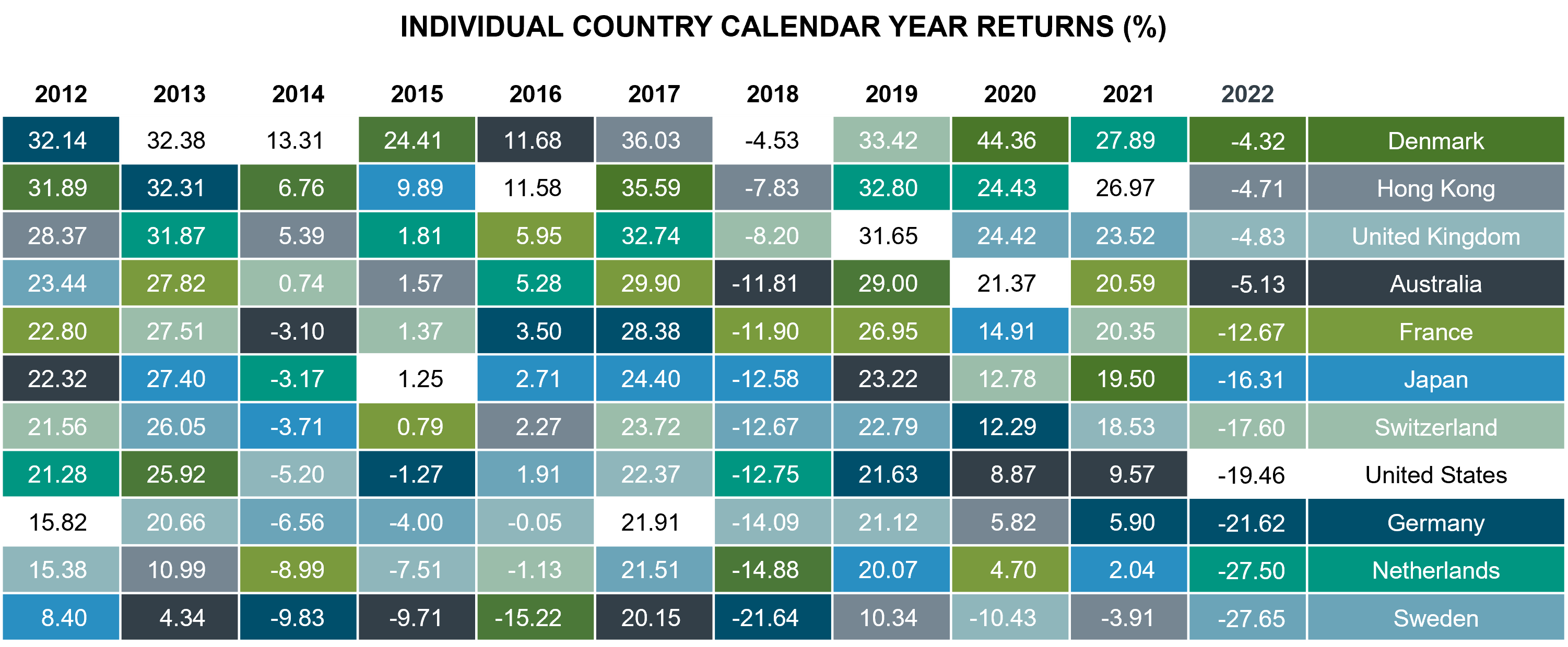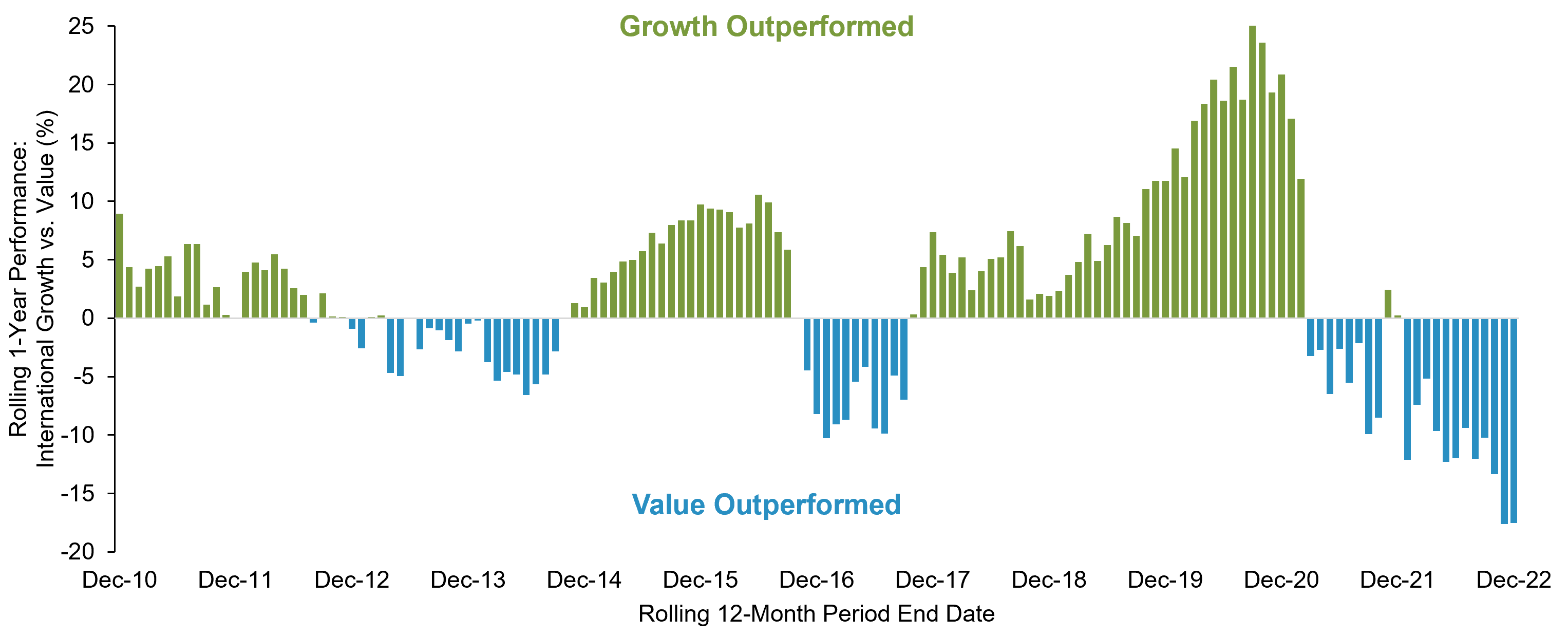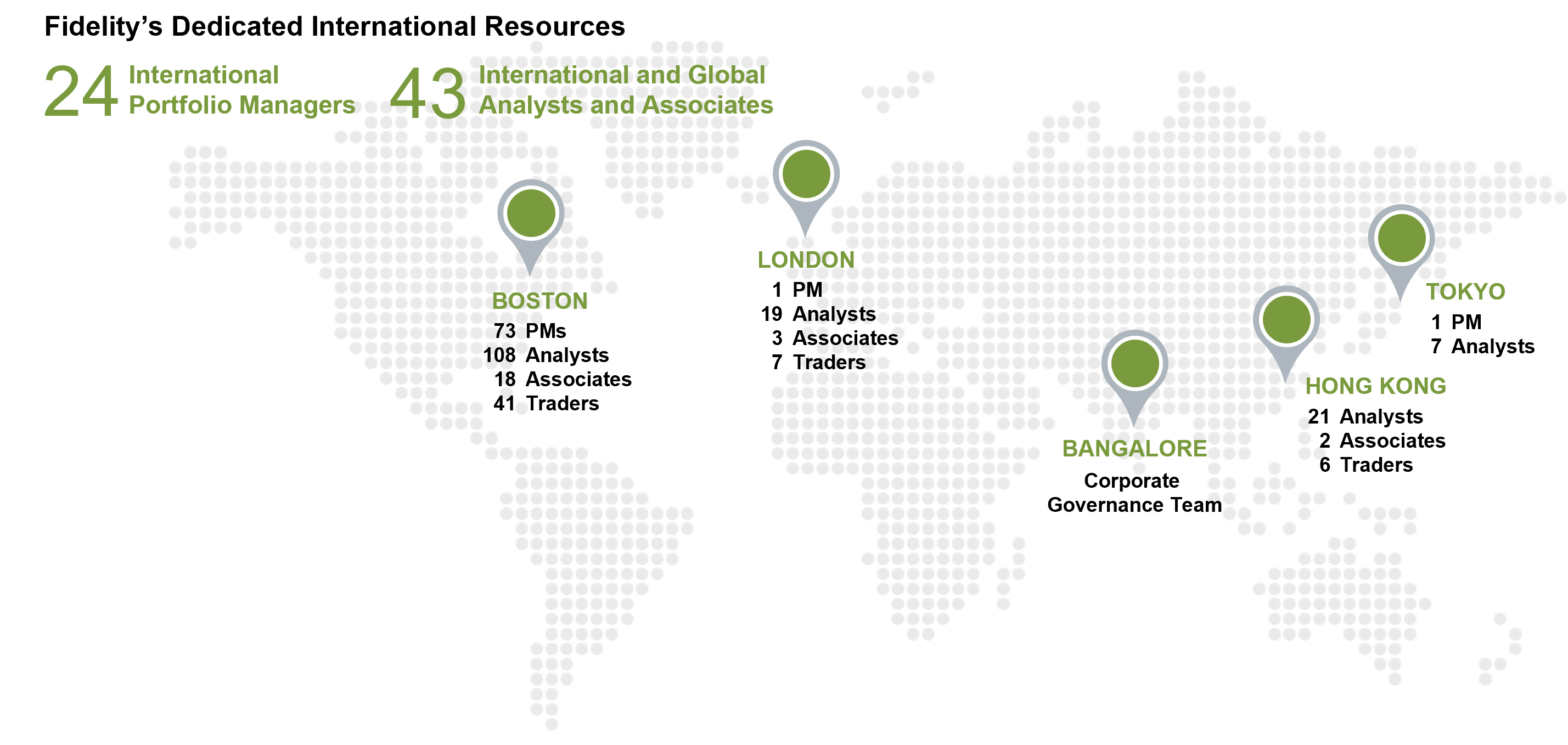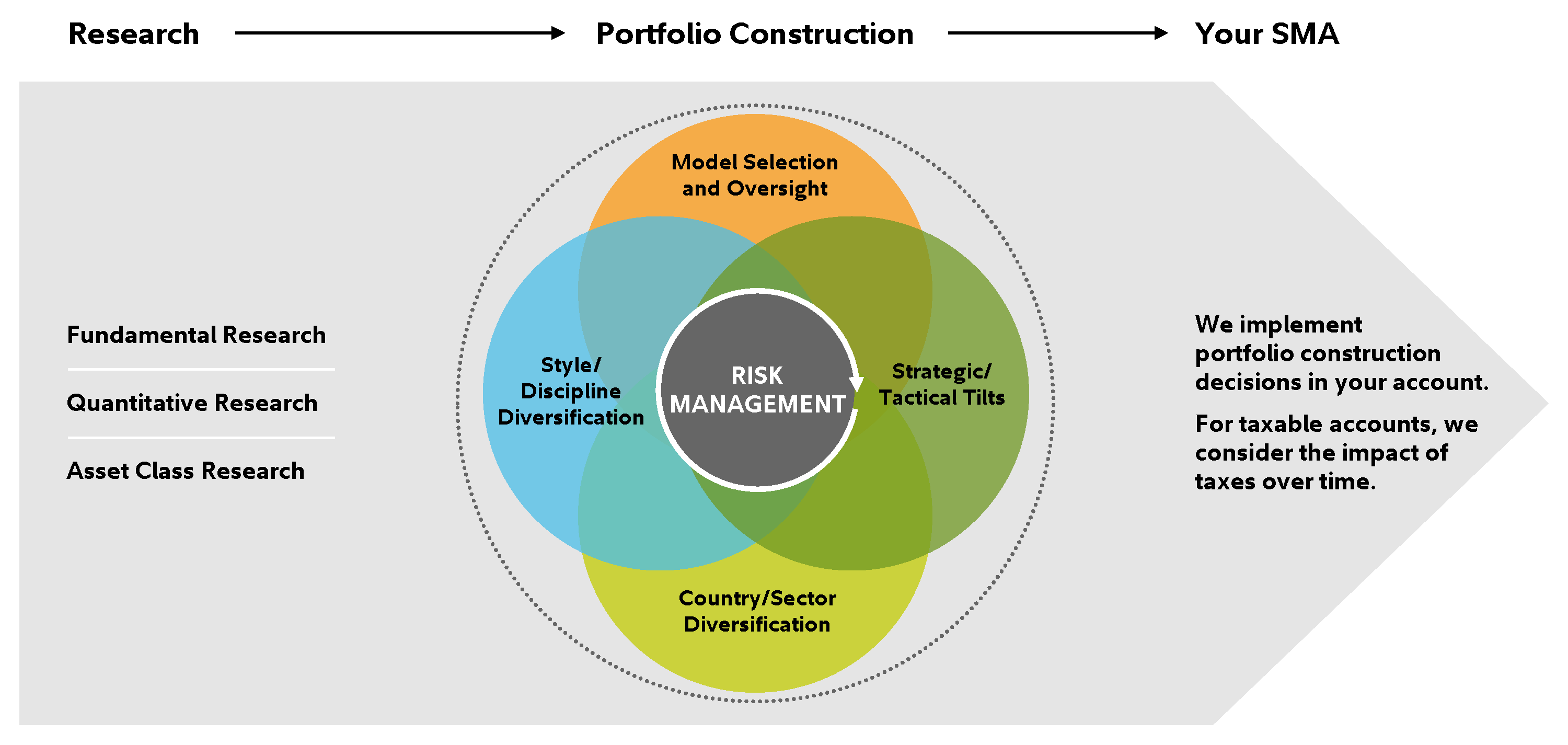Fidelity® International Equity StrategyA separately managed account that diversifies across developed-market countries outside the U.S. in an effort to deliver returns greater than the MSCI EAFE Index (Net MA Tax) over a full market cycle |
Investment strategy: Seeks to deliver long term growth of capital and to outperform the MSCI EAFE Index (Net MA Tax) over a full market cycle.
Types of investments: Primarily U.S. traded American Depositary Receipts (ADRs) and a completion fund1
Investment minimum: $100,0002
Gross annual advisory fee: 0.30% – 0.70%3 (varies based on total assets invested)
Why we focus on geographic diversification
In general, we believe a well-diversified equity portfolio should include at least 30% allocation to international securities including developed and emerging markets. Returns from developed-market countries, including the U.S., can vary widely from year‐to‐year, as seen in the chart below. Given these ups and downs, investing around the world may help a portfolio by lessening the impact any one market can have. To this end, the Fidelity® International Equity Strategy diversifies across many developed-market countries outside the U.S. while pursuing capital appreciation over the long‐term.

Calendar year returns represented by individual country's MSCI IMI Country Index. The MSCI Investable Market Index (IMI) captures large, mid, and small cap representation of approximately 99% of the investable equity universe for each individual country. Eleven countries shown include the United States and the top 10 country holdings in the MSCI® EAFE Index as of 3/31/22 (represents over 88% of the index's total net assets). Past performance is no guarantee of future results. Diversification does not ensure a profit or guarantee against a loss. It is not possible to invest directly in an index. All market indices are unmanaged.
Performance shifts between international growth and value styles
Diversifying across investment styles may help reduce volatility over the long term because outperformance between growth and value can shift dramatically in a short period of time, as seen in the chart below, and the timing of that shift is difficult to predict. For this reason, Fidelity International Equity Strategy allocates across investment styles and adjusts as needed to help manage volatility throughout the market cycle.

Tapping Fidelity's International Expertise
Strategic Advisers LLC (Strategic Advisers) provides portfolio management capabilities for this strategy and has partnered with Fidelity Management & Research Company LLC (FMRCo) to leverage their investment research capabilities. Since the underlying stock selection within Fidelity® International Equity Strategy models will be a significant source of return potential, Strategic Advisers is leveraging Fidelity's experience and history of over 65 years managing international equity strategies.
Fidelity has offices and investment professionals all over the globe providing deep, local research and market insight for security selection decisions. Fidelity's on-the-ground presence helps model portfolio providers make educated decisions based on past experience, rigorous fundamental company analysis, and prevailing market trends as they seek long-term capital appreciation for the strategy.

Figures exclude Executive Management, MegaCap Analysts, Technical Analysts, Quantitative Analysts, and Sector Specialists. Analysts and associates primarily classified on their coverage of companies. (Some analysts may also have money management responsibilities and some PMs may post some research.)
Our disciplined investment process for this strategy is built upon a foundation of rigorous research. In constructing the portfolio, as shown by the various colored circles on the diagram below, we will blend multiple international equity models, modestly tilting the strategy to certain styles throughout the market cycle to help manage risk as well as add value over time. As investment decisions are made and implemented into each client account, we will consider the impact of taxes over time for taxable accounts where taxes matter.4

